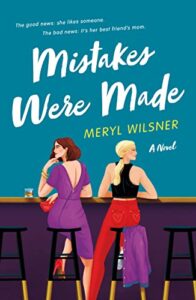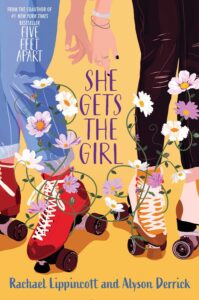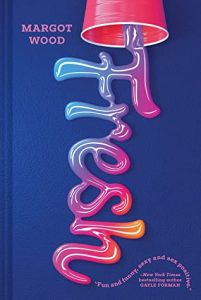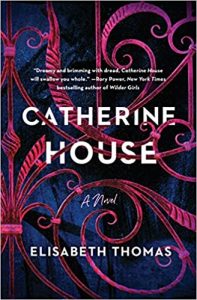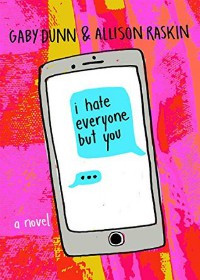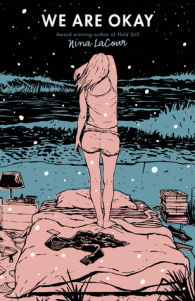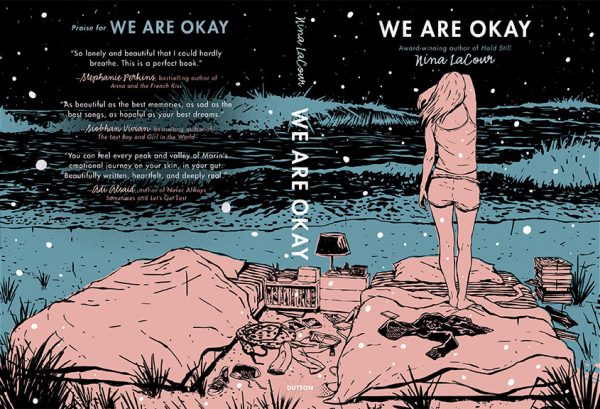Amazon Affiliate Link | Bookshop.org Affiliate Link
Mistakes Were Made, Meryl Wilsner’s second f/f romance following 2020’s acclaimed Something to Talk About, is billed as “a sexy rom-com about a college senior who accidentally hooks up with her best friend’s mom.” While I anxiously awaited this book as much as the next reader of queer romances, I admittedly postponed picking it up, afraid that a relationship between a college student and a woman one generation her senior would be too problematic, or too cringe, for me to root for. But Wilsner proved me wrong–this book is funny, nuanced, deeply empathetic, and piping hot.
It’s Family Weekend at Keckley College, but not for senior Cassie Klein, who is effectively estranged from hers. Cassie goes to an off-campus bar to escape the festivities, not to cruise for hookups, but when a statuesque older woman catches her eye from across the room, she can’t resist sending a drink her way. Erin Bennett is not there to cruise for hookups either. A recent divorcee splitting Family Weekend visiting hours with her ex-husband, she is simply killing time in a college town. But when a bold younger woman sends a drink across the bar, she has trouble turning down the opportunity to enjoy her relatively new singlehood. A steamy backseat romp ensues, and the two women part ways–no numbers exchanged and no plans to meet up again.
When Cassie’s best friend Parker invites her to tag along to breakfast with her mom the following morning, Cassie comes face-to-face with Erin–the Erin from the bar last night, the Erin she never intended to see again, the Erin who is also her best friend’s mom.What was meant to be a one-night fling becomes impossible to ignore as Cassie and Parker become closer friends and Cassie’s and Erin’s paths repeatedly cross.
When Parker surprises Cassie by inviting her home for the holiday break, Cassie can’t say no despite the, um, complication of cohabitating with Erin. Unsurprisingly, she can’t say no to Erin either, who is still as alluring as she was the night they met. Erin and Cassie start to sneak around behind Parker’s back as their fling morphs into something more serious. (A side effect of their sneaking around is a liberal number of very hot sex scenes in a variety of covert locations.) This begs the question: will Cassie and Erin come clean about their secret relationship at the risk of losing the most important people in their lives, or will they end it and live with the heartbreak?
While I scoffed at the likelihood of Cassie so cavalierly hitting on Erin in the opening chapter, Wilsner expertly develops both Cassie’s and Erin’s characters and shines light on their motivations. Cassie is a whip smart, ambitious aeronautic engineering major whose hardscrabble youth has translated to a resilient, confident demeanor. Erin is a highly successful attending physician whose professional badassness is not evinced by her interpersonal skills. A bisexual reentering the dating scene following a suffocating marriage, Erin lacks the self-assuredness to confidently go after what she wants. This sometimes comes across as iciness toward Cassie. Aside from these few moments of emotional withholding, however, the dynamic between the two women feels authentic and relatively balanced. That said, it can’t be ignored that given her age and independent wealth, Erin inherently holds some amount of power over Cassie, a young woman only on the cusp of post-college adulthood.
Surprisingly, the one factor about this book that didn’t sit well with me was not the age-gap trope, but the tokenizing of Cassie’s and Parker’s friend Acacia. Through the course of the book, Acacia, who is the only Black main character we meet, is the sole person who carries the secret of Cassie’s and Erin’s affair. That Acacia has to do the emotional labor of navigating this extremely sensitive situation for an entire academic year feels like an unfair burden to throw on her, and I would be remiss not to mention it.
Ultimately, this is a thought-provoking contemporary romance that challenged some prejudices I carried about age differences in relationships. And that, to me, is the mark of a well-crafted book: to make readers open their minds and hearts to situations and people that make them feel uncomfortable.
Content warnings: alcohol consumption, alcoholic parent (mention), cheating partner (past), divorced parents, misogyny, parental neglect, recreational marijuana use.
Susannah (she/her) is a public librarian and writer based in Cambridge, Massachusetts. She consumes mostly queer literary fiction, with contemporary romance novels as palate cleansers. You can find her on Goodreads at https://www.goodreads.com/ohhsusannah and at https://www.susannahbt.com/

